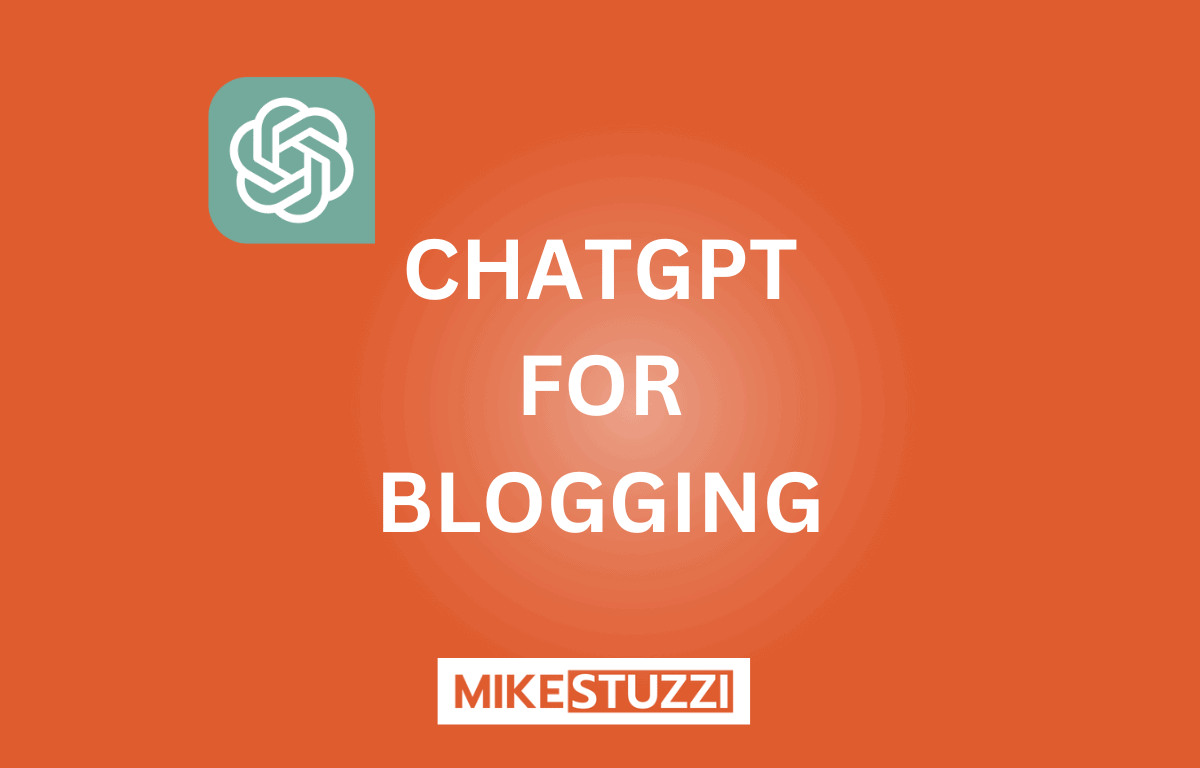8 Practical Ways to Use ChatGPT for Blogging
Nowadays, blogging has become a crucial tool for businesses and individuals to share their expertise, connect with their audience, and drive traffic to their websites. However, the process of consistently generating high-quality content can be time-consuming and challenging.
This is where ChatGPT, an AI-powered language model, comes in. With its natural language processing capabilities, ChatGPT can be a valuable resource for bloggers looking to simplify their writing process and produce more engaging and informative content in a fraction of the time.
In this article, you’ll learn some of the most effective ways to leverage ChatGPT for blog writing, from generating ideas to optimizing for SEO and crafting social media content. Whether you’re a seasoned blogger or just starting out, these tips will help you make the most of ChatGPT for your blogging endeavors.
Read also: How to Use AI in Blogging
How To Use ChatGPT for Blogging
Below are the best ideas for using ChatGPT to blog.
1. Generating Blog Post Ideas
ChatGPT can be a valuable tool for overcoming writer’s block and generating new, innovative blog post ideas. All you need to do is input prompts or questions related to your niche or industry so that ChatGPT can provide a wide range of potential topics to explore.
The process of using ChatGPT to brainstorm topics involves engaging in a dialogue with the AI, asking open-ended questions, and exploring different angles and perspectives. This can lead to the discovery of unique and engaging blog post ideas that may not have been initially considered.
For example, in the AI niche, you can ask a question like the one shown below to get some ideas:
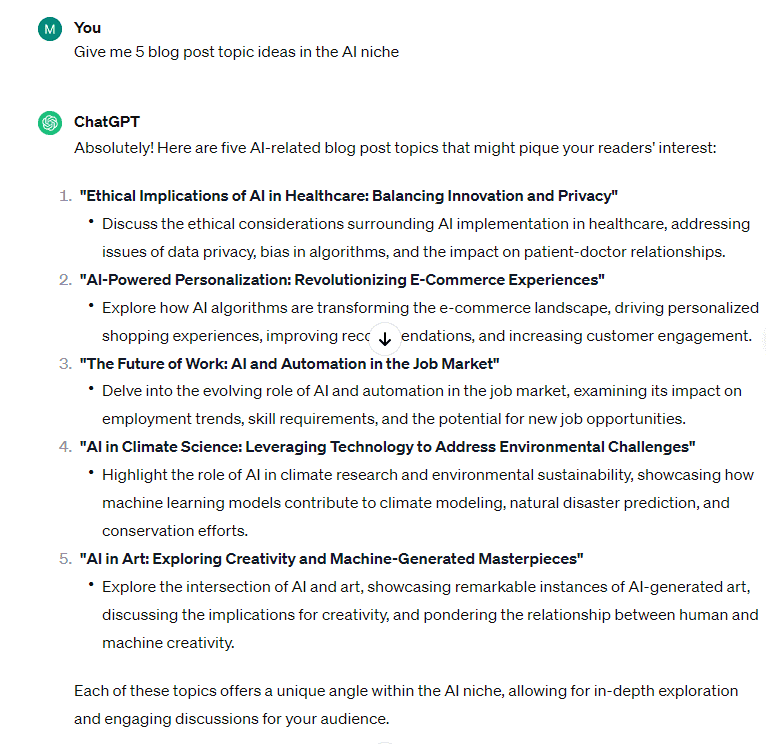
Remember, you can generate as many titles as you need. That’s one of the benefits of using ChatGPT for blog topic ideas.
It can even provide variations of a specified topic or break it down for you. For example, you can expand the idea of GPT models using ChatGPT as follows:

2. Building Blog Outlines
Blog outlines are the key to planning and organizing your blog post so you can write faster and more efficiently. Without them (like some people do) can cause you to spend a lot more time trying to figure out the next heading or section to add to your post so you can meet the target word count (which can affect its quality).
ChatGPT can be a valuable tool for constructing well-organized and structured blog outlines. All you have to do is provide the main topic or key points, and ChatGPT will generate a cohesive framework that outlines the flow of the blog post.
Check the example below:
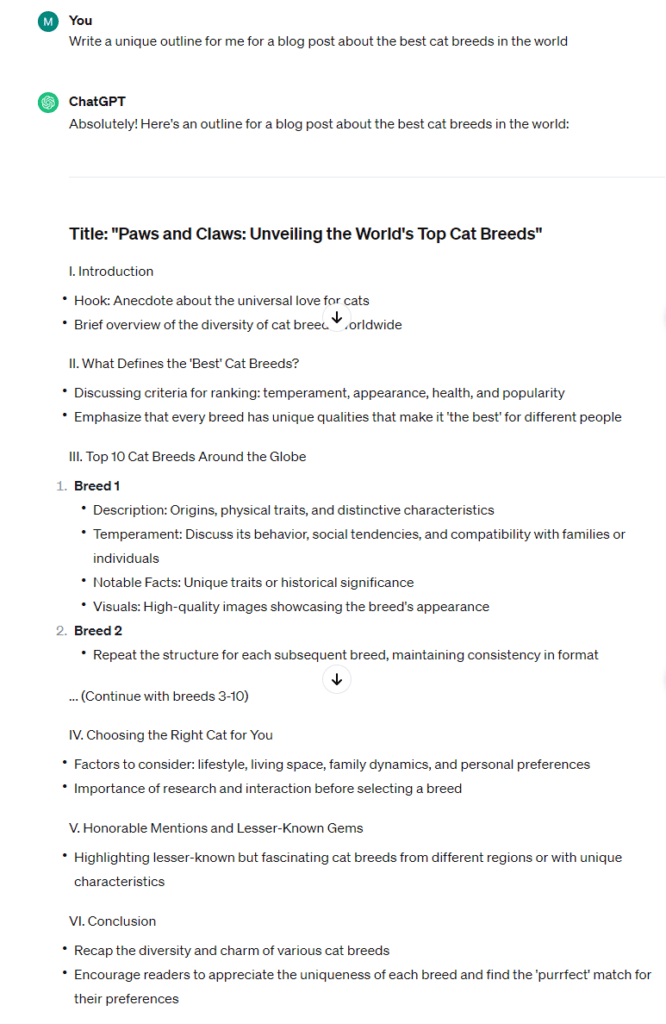
Notice that this outline provided you with the opportunity to input the breeds according to your research or knowledge. Still, you can ask ChatGPT to include the breeds in the outline or request it (separately) to provide some examples for you to include in the post later.
3. Writing Blog Content
This is the controversial way of using ChatGPT for blogging. Some people don’t support this idea because it promotes the culture of anyone writing and publishing whatever they want without any expertise in the matter.
Still, there are good ways to use ChatGPT for writing blog content, as long as you have some background knowledge about the subject. This approach allows you to refine the instances where ChatGPT provides basic, insufficient, or sometimes inaccurate text.
Now, there are two ways to use ChatGPT to write the content in your blog post.
Crafting Paragraphs from Scratch
You can write new paragraphs from the beginning to the end using ChatGPT. I recommend this method because going paragraph to paragraph enables the AI to delve deeper into the subject.
Better yet, you can create one section after another, each containing varying numbers of paragraphs. For example, you could start with the intro, the various parts of the body text, and then the conclusion.
I asked ChatGPT for assistance in writing an intro, as shown below:

That was pretty good! Let’s try some more paragraphs for a sample subheading in the same blog post about home date night ideas:
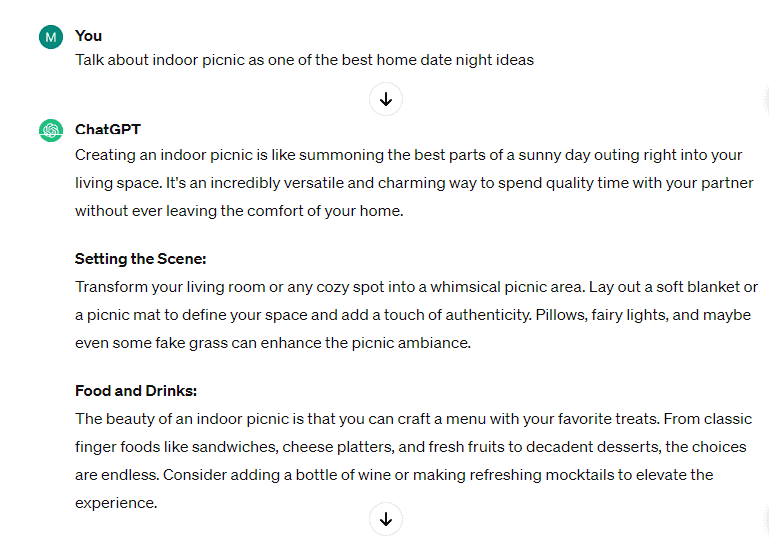
Expanding on Key Points and Ideas
Depending on how deep you want to go, you can ask ChatGPT to expand specific points or ideas that you have or ones that it has provided for you.
Here’s an example:
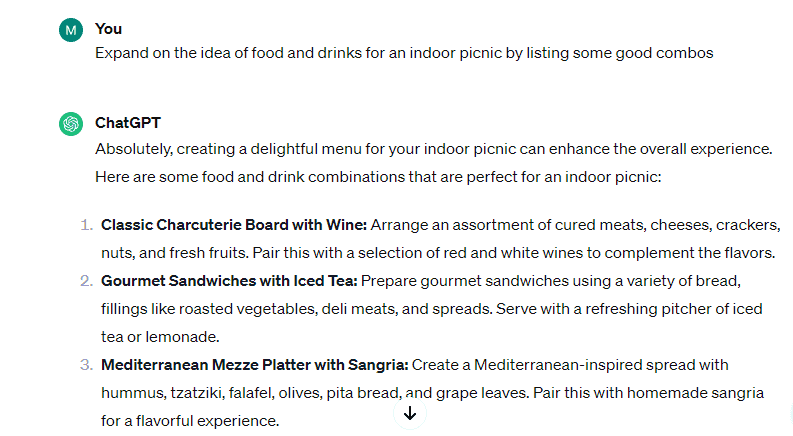
These would be great additions to your post. As you can see, you’ll have just gone deeper into a topic to create a more comprehensive guide. This idea also boosts word count (the right way, lol).
4. Researching
Another way to use ChatGPT is for research. But you have to approach this method the right way to avoid getting inaccurate data.
ChatGPT can make mistakes and provide false information. You can only know this if you have knowledge of the matter or compare ChatGPT’s output with other reliable sources.
Other than that, ChatGPT can provide outdated information based on the time up to which its training data is reached. This is something that other AI models are trying to fix.
What you can do with ChatGPT in blog post research is when you’re writing evergreen content on widely-known or past events or scenarios. For instance, you can get good details about World War II using the tool:
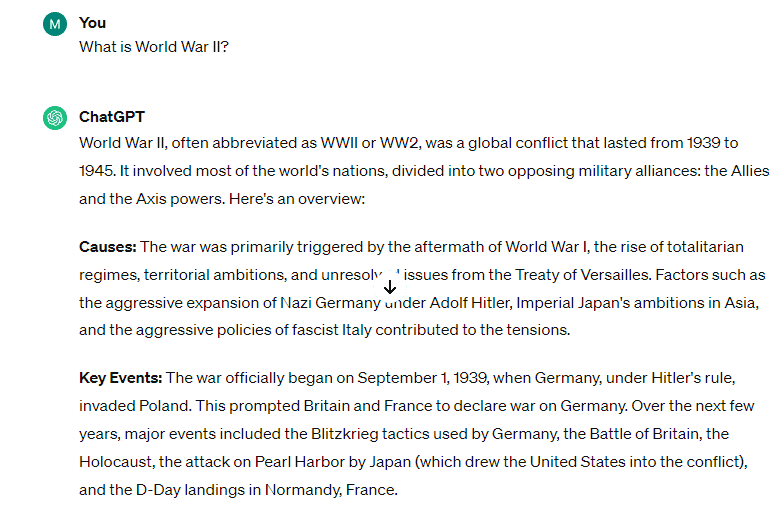
If you cross-check this information, you’ll find that ChatGPT is accurate. However, it can make mistakes when it comes to data such as recently-established company profiles and statistics on very specific things.
5. Content Optimization
ChatGPT can be a powerful asset for creating keyword-rich content that aligns with SEO best practices. By inputting relevant keywords or topics, ChatGPT can suggest variations and related terms.
This enables you as a content creator to incorporate these keywords seamlessly into your writing. It’s a chance to improve the discoverability of the content by search engines and make it more likely to rank for specific search queries.
Additionally, ChatGPT can assist in generating content that naturally integrates keywords without compromising the quality or readability of the material. It ensures that the content remains engaging and informative for readers while also being optimized for search engines.
For such to happen, simply ask the tool to incorporate relevant search terms into the text it will produce. This could be your blog outline or the contents of the article.
6. Crafting SEO Titles and Meta Descriptions
Another way ChatGPT can help with blogging SEO is to craft titles and meta descriptions that promote site rankings.
Generating SEO Titles
ChatGPT can assist in generating SEO titles by incorporating relevant keywords to ensure that they align with the content and are likely to attract organic traffic. It can propose different title options, providing variations that are optimized for search visibility while maintaining a natural and appealing tone.
This helps you to choose titles that are both descriptive and attention-grabbing. The result would be an increase in the likelihood of click-throughs from search engine results pages.
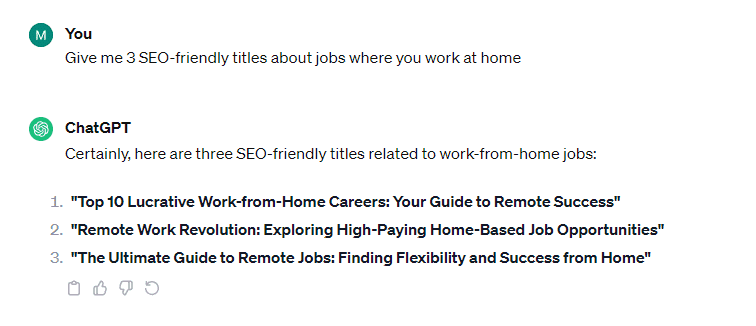
What can I say? ChatGPT is a natural at this.
Crafting Meta Descriptions
ChatGPT can also aid in crafting effective meta descriptions that accurately summarize the content while encouraging users to click through to the page. Simply provide a brief overview of the content so that ChatGPT can generate concise and impactful meta descriptions that incorporate relevant keywords and key selling points.
You’ll have made sure that the meta descriptions are not only optimized for search visibility but also compelling for potential readers. It’s a chance to attract more organic traffic as more people are likely to click on your web page if they see that it covers what they were looking for.
Below is an example of a meta description from ChatGPT:
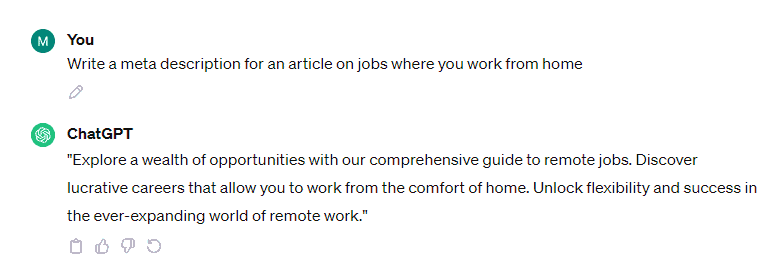
7. Rewriting Blog Content
Another idea on how to use ChatGPT is rewriting blog content. This tool also offers a range of benefits if you’re looking to enhance the quality, clarity, and engagement of your articles.
Paraphrasing and Simplifying
ChatGPT can assist in paraphrasing and simplifying complex or verbose content to make it more accessible and reader-friendly. You just have to copy and paste the original blog content for ChatGPT to generate alternative phrasing and structure.
It’s a chance to convey the same information in a clearer and more concise manner. This way, you reduce the instances where readers click back away because they can’t comprehend what you’re saying.
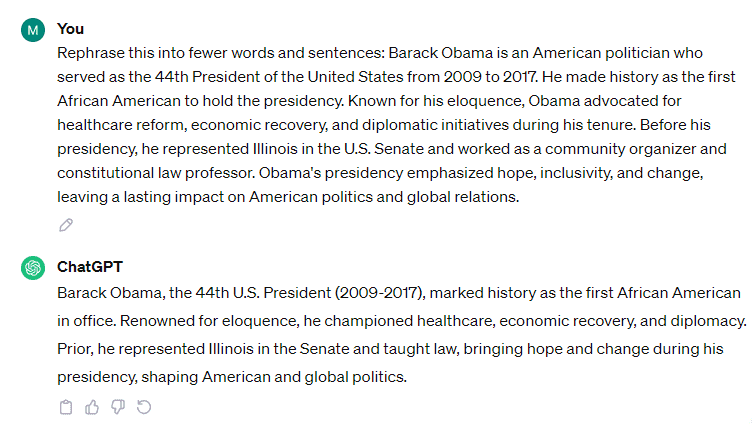
Enhancing Clarity and Coherence
Your content has to flow logically and smoothly. ChatGPT can help in refining the flow and coherence of blog content.
It can suggest reordering paragraphs, restructuring sentences, and improving transitions. This can contribute to a more cohesive and organized blog post that enhances the overall reading experience for your audience.
Adding Depth and Insight
Another thing that ChatGPT can do is provide additional insights and perspectives. In other words, you’re able to enrich your blog content with new ideas and information.
ChatGPT can generate relevant details, examples, and explanations that expand and enhance the existing content. What you do is provide some text and ask the tool to expand it according to your liking.
But don’t overdo this. There are instances where your text works best as it is, and asking ChatGPT to expand it will result in unnecessary details.
Changing Style and Tone
If you didn’t know, ChatGPT can provide guidance on refining the style and tone of any content. It can offer suggestions for adjusting the language, tone, or voice to better align with the intended audience or the overall messaging of the piece.
8. Proofreading and Grammar Checking
ChatGPT can assist in identifying and correcting spelling and grammar errors within the content. If you input your text, ChatGPT can highlight and suggest corrections for misspelled words, punctuation errors, and grammatical mistakes.
Here’s a quick example of a ChatGPT grammar check in action:
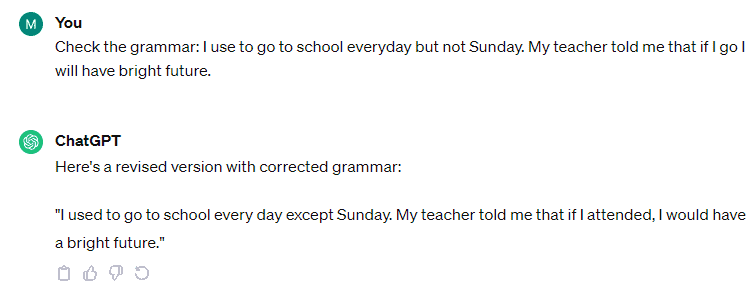
Best Practices for Using ChatGPT to Blog
Using ChatGPT for blogging can be quite helpful due to its ability to generate information, answer queries, and provide diverse perspectives. But there are some tips to help you get the best out of using the AI assistant:
- Be clear: Define your request, topic, or the specific information you’re seeking. Clear, concise questions or prompts will help ChatGPT understand your needs better.
- Ask specific questions: Be as specific as possible in your queries. Instead of asking broad questions like “Tell me about World War II,” ask focused questions like “What were the key events leading to the start of World War II?” Specific questions help ChatGPT generate more relevant and precise information.
- Provide context: When asking questions, provide context or background information if necessary. This helps ChatGPT understand the specifics of your query and provide more accurate responses.
- Use follow-up questions: ChatGPT excels at providing detailed information through follow-up questions. If you need more depth on a particular aspect or clarification, ask follow-up questions to dig deeper into the topic.
- Evaluate the responses: ChatGPT provides information based on its training data and might not always have the most current or exhaustive information. Cross-verify the information obtained from ChatGPT with reputable sources or conduct further research to validate the details.
- Combine ChatGPT with external resources: While ChatGPT can provide valuable information, supplement its responses with information from trusted external sources, academic papers, books, or scholarly articles for a well-rounded research approach.
ChatGPT, while powerful, might not have access to real-time data or the ability to verify recent developments. It’s essential to acknowledge its limitations and use it as a tool to guide initial research efforts and simplify the writing process.
Conclusion
In conclusion, ChatGPT can be a valuable asset for bloggers and content creators in various aspects of the content creation process. Whether it’s generating compelling titles and meta descriptions to improve search visibility and click-through rates or rewriting blog content to enhance clarity and engagement ChatGPT offers a range of capabilities that can elevate your content creation process.
Now there are various other writing tools that you can use other than ChatGPT. Some even provide better, fact-checked, and up-to-date output.
Check out my list of the best AI writing tools for more information.

